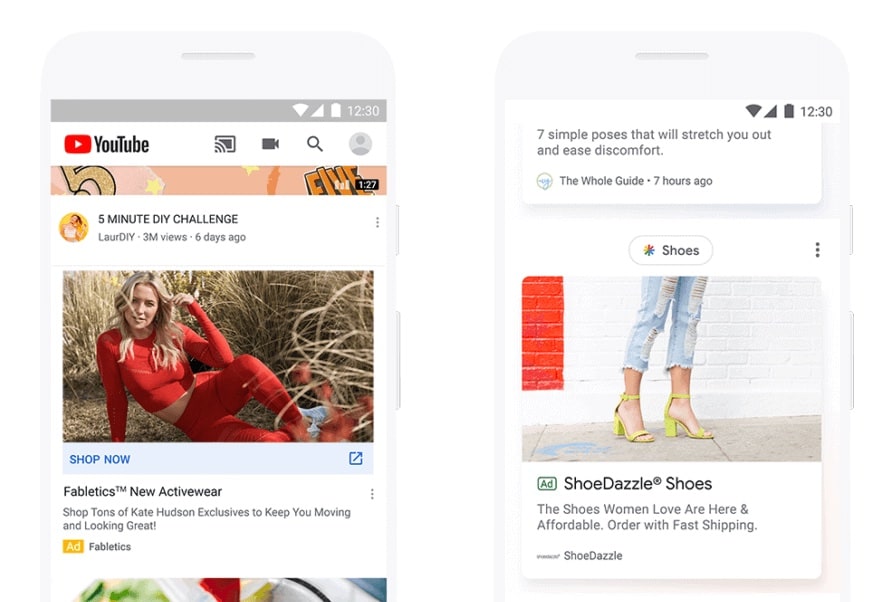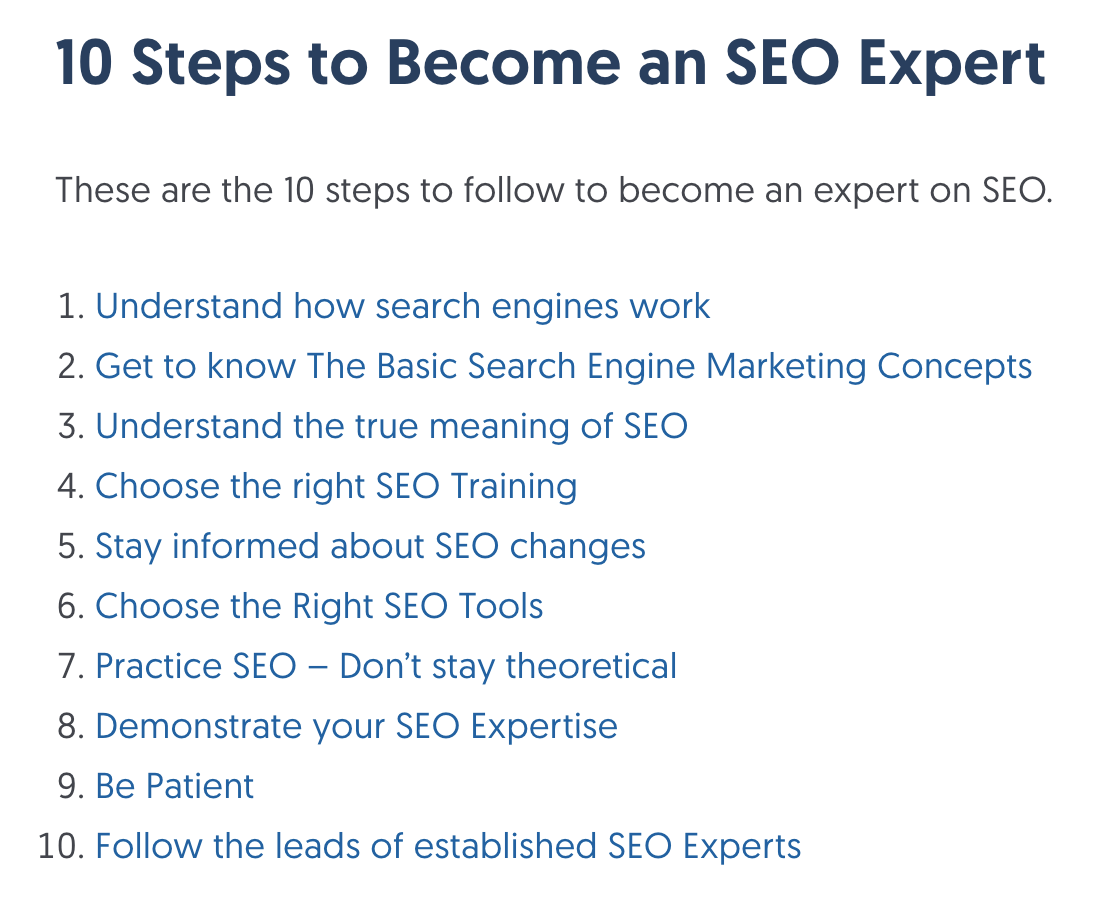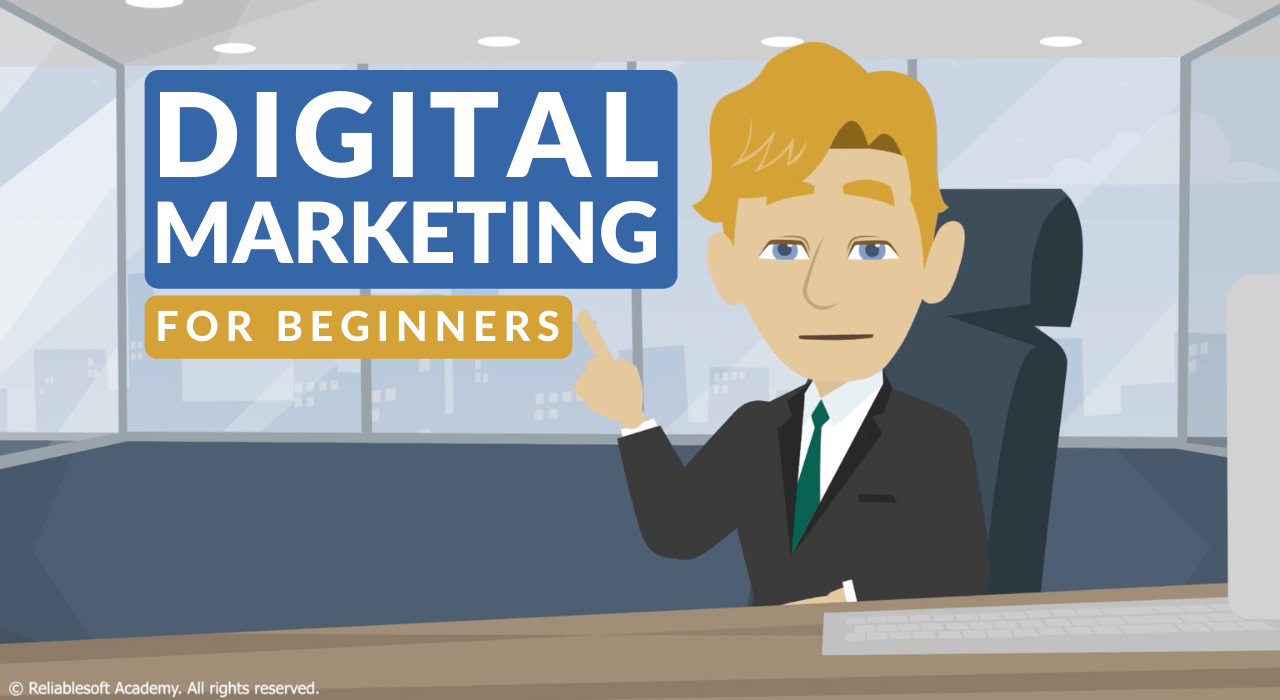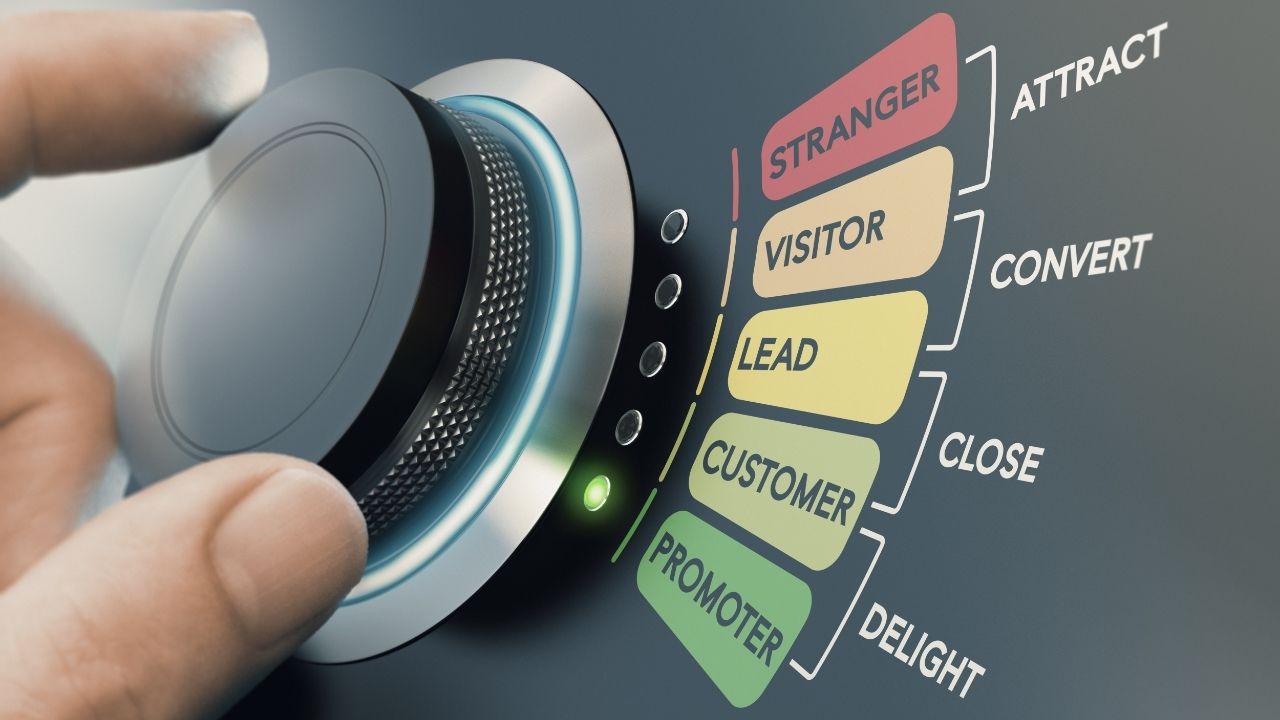The content you use to communicate with your target audience can make the difference between converting your prospects into sales or losing them to the competition.
Content at the top of the marketing funnel is especially important as it is often the first point of contact someone has with your business.
In this post, you’ll learn about the top of the funnel content and what it aims to achieve.
I’ll also provide some examples of top of the funnel content you can start using for your business.
What is Top of Funnel Marketing?
Marketing funnels are used to bring traffic to your website and then engage with these prospects before converting them into customers. The main value of marketing funnels is that they allow you to target your potential customers more effectively.
Consumers are not interested in messaging and content that is not relevant to the challenges they are facing. Marketing funnels allow you to segment your audience based on where they are in the buying process so that you are able to communicate with them in a relevant manner.
Funnels are broken into different stages in order to categorize their prospects.
Businesses can use different stages to divide their funnels but typically stick to a four-stage approach with the following phases: Awareness, discovery, consideration, and conversion.
These four stages are broken further into three sections and that’s how we get the concept of top of the funnel:
Top of the Funnel (TOFU): The top of the funnel consists of the awareness stage. This is where your audience discovers and interacts with your business for the first time. The main focus of this stage is on attracting new prospects and collecting data on buyer personas to be used during the later stages of the funnel.
Middle of the Funnel (MOFU): The middle of the funnel consists of the discovery and consideration stages. During this stage, your audience engages with your business and begins to explore your products or services. This is where you will look to prove the value of your business and how you can solve their specific challenges.
Bottom of the Funnel (BOFU): The bottom of the funnel is the conversion stage. This where members of your audience become customers. Messaging during this stage is focused on selling and retaining customers.

The top of the funnel begins the moment a prospect becomes aware of or interacts with your business in some way. You can think of the top of funnel marketing as making a first impression.
Because the audience is not familiar with your business, once a prospect becomes aware of you it should be your focus to introduce your business and begin to lay the foundation of how you can provide them value.
What is Top of the Funnel Content?
Top of the funnel content is any content used to target prospects at the top of your digital marketing funnel. The purpose of top of the funnel content is to bring traffic to your website, increase brand awareness, and establish your business as an expert and trusted source of information for your industry.
Because the objective of this stage of the marketing funnel is to bring awareness and create interest, top of the funnel content should focus on informing your audience, not selling to them.
Create content that provides real value to your audience
To create meaningful top of the funnel content you need to understand your audience and the unique challenges they face.
Ask yourself: What are your audience’s interests? What information would be of value to them? What challenges do they need to solve?
Knowing your audience on a deeper level will enable you to create content that your audience actually wants and is willing to exchange their information for.
Before you can begin creating top of the funnel content for your audience, you need to discover their pain points. The most effective way to do this is to find the search terms they are using.
This will provide direct insight into the problems your audience is looking to answer.
Search terms related to these types of ideas are considered top of the funnel keywords. You can use the following techniques to identify top of the funnel keywords:
Keyword research: Use your favorite keyword research tool to begin looking for keywords around your area of expertise. Note down any search terms that you feel would be good for creating content around.
Google suggests and people also ask: On search results pages, Google will often show a list of questions related to the search query that users are also searching for. Run searches for queries related to your industry and note any related questions that you find. These can make more relevant ideas for top of the funnel content.
Once you have some ideas for the topics to base your content on, you can begin deciding what type of content to create.
There are plenty of different types of content that are effective for building awareness and engaging your audience at the top of your marketing funnel.
Let’s examine the types of content that work well for the top of funnel marketing.
13 Best Content Types for Top of Funnel Marketing
Here are the top types of top of the funnel content.
- Listicles
- Landing Pages
- Paid advertisements
- Webinars
- How-to articles
- Downloadable free guides
- Explainer videos
- Free tools and free templates
- Survey your existing customers
- Checklists
- Case studies
- Whitepapers
- Infographics
1. Listicles
A listicle is a blog post made up of a list of items. They normally have a number in the title like “7 ways to do X”.
The structure of a listicle is simple. There is an introduction, a list of items, and a conclusion.
Listicles are great for both businesses and their audiences because they are easy to create and equally easy to digest. This is because they are a perfect match for our brain’s inclination to categorize information.
The most common type of listicles are “best of” posts. You have undoubtedly seen plenty of these around the web.
In fact, you’re reading one right now. Take a second to consider the experience this article is creating. Hopefully the simple and easy to follow structure will help you retain the information we have given.
These articles can work for you as well. Chances are, your audience is frequently in the market for different products and services to help them grow their business. They will want to find the best available solutions or ways to do something but may not have the time to do extensive research themselves.
This is where you can provide value to your audience by creating a comparison or “best of” blog posts in which you review different products or services.
2. Landing Pages
Landing pages are the first page your prospects will see when arriving at your website.
They tend to have a different layout than normal pages and are designed to get a visitor to complete a specific action. Landing pages can be used for lead generation or to provide visitors an overview of your products or services along with the ability to make a purchase.
Your homepage often serves the role of a landing page as it is the page visitors will arrive on when typing your website in the browser.
For example, you can make a page around a specific search term and use it for the target page of a paid advertisement campaign.
Landing pages work hand in hand with your other types of top of the funnel content. If you want to provide your audience with a webinar or free tool you’ll need a page to give customers details about the offer and the ability to claim it.
3. Paid advertisements

Ads are one of the most effective ways to drive traffic to your website.
When you are looking to attract new leads for your business, there are two types of ads you should focus on; search ads and social ads.
Search ads will display on search engines like Google or Bing. They are triggered to display when people search for TOFU keywords.
Social ads are a little different in that a user is not searching for anything related to your business. Instead, you are running the ads to appear in their social feeds while they are using different platforms.
With social ads, you can target users based on their interests to ensure that your ads are only appearing in front of relevant prospects.
Ads are often the first point of contact you will have with a prospect. To be effective they need to highlight the value of your business while being engaging enough to encourage prospects to click through to your website.
4. Webinars
Webinars are video presentations hosted over the internet. They are a dynamic form of content and are great for engaging prospects at the top of your digital marketing funnel.
When you host a webinar it is a great opportunity to position yourself as a subject matter expert and begin to build trust with your prospects.
You can use webinars as a lead generation tool and require participants to give their email in exchange for access. Or you can make them open to everyone without the need to provide contact information.
Live webinars naturally generate the most engagement but you can record your webinars as a video and make them available on-demand after the event.
5. How-to articles

How-to articles are incredibly valuable to prospects because they provide an in-depth solution to a specific problem — which is the exact reason why they are interacting with your business.
Like listicles, they tend to employ a clean and easy to follow structure. Instead of laying out a list of ideas, how-to articles provide a step by step guide on how to do something. The steps do not necessarily need to be numbered but the process should be clear for the reader to understand.
How-to articles are great for generating traffic as the title of the article is often an exact match to a query made by a TOFU searcher.
Make sure to provide a thorough answer to the question the article is looking to address. This will leave your readers feeling satisfied and well help you establish your business as an authority on the subject.
6. Downloadable free guides
Another type of written content you can use for the top of the funnel are in-depth guides. These can come in a downloadable format that can be given away for free
The content that will comprise your free guides will be similar to your how-to posts. The difference is that the guide will be much more thorough. These work well for subject matters that might be too complex to adequately explain in blog posts.
Free guides can work in tandem with your landing pages and are an effective tool for lead generation. Look to create your free guides around the search queries and topics you find in your keyword research.
7. Explainer videos

Building off of webinars, videos are another great type of top of the funnel content.
There is no shortage of the type of content you can use for your explainer videos.
It can be effective to repurpose some of your other content into explainer videos. This works especially well for long-form blog posts.
Here are some of the types of explainer videos you could use for top of the funnel content:
- How-to videos
- Demo videos
- Features videos
- Testimonials videos
Explainer videos are a solid fit for the top of your marketing funnel as there are multiple places where you can use them.
You can add explainer videos to your landing pages or blog posts. You can also use them on your social media profiles like your Youtube account. This can help expose your videos to more prospects as they will be visible to searchers on the platform.
8. Free tools and free templates
If you want to make your business stand out, consider offering free tools to your top of the funnel prospects.
Some examples of useful free tools are calculators like an ROI calculator or a program that can run a technical SEO audit of a website.
Templates are another great form of content to offer your audience for free. This could be a financial model in an excel spreadsheet or a WordPress plugin or theme.
9. Survey your existing customers
Surveys are effective at all stages of your marketing funnel, particularly at the top. When you ask your audience how they came into contact with your business and what they are looking to gain from the interaction you make them feel valued.
Surveys are especially valuable for your business as they can provide a useful source of information about your audience. You can then use this information to refine your user experience and send more relevant messages to your customers.
Surveys work well in unison with some of the other forms of TOFU content on this list, Consider embedding your surveys to appear with:
- Blog posts
- Free downloads
- Checklists
Some example questions you can ask in your surveys:
- What topic are you interested in learning about the most?
- What is the biggest challenge for your business?
- What information is the most valuable to you?
10. Checklists
Checklists are a great tool for lead generation and are an effective type of content for the top of the funnel. They are easy to create, easy to consume, and have viable use across any industry.
With a checklist, you can provide your audience with a step by step process for addressing an issue they are looking to solve. Not only do they allow you to give actionable guidance, but they are engaging and highly interactive.
If a prospect were to download one of your checklists they will likely have to return to it repeatedly as they move through the items on the list.
There are plenty of topics you can use for checklists. For example, you could provide an SEO checklist for someone creating a new website or a business startup checklist for someone launching their first company.
11. Case studies
Case studies are a form of report or story that details how a customer was able to overcome their problems through the help of your business.
They are great for building authority and are highly relevant to your audience as they provide a real-life example of the value your business can bring.
Look through the results you have produced for previous customers to see if any would make for a good study. You can reach out to them for testimonials about how they benefited from your business.
12. Whitepapers
Whitepapers are in-depth reports where you outline a specific problem and then supply a solution. They are quite useful when you want to create content around a subject that may be too detailed for a blog post.
Whitepapers are generally more formal in their tone and require much more research and time to create than a blog post.
Because whitepapers go into great detail about a specific subject they make great top of the funnel content for when a prospect is just starting to research a particular problem.
13. Infographics
Infographics are visual assets combined with some form of text used to communicate with your audience. They make a great top of the funnel content because they are visually appealing and easy for your audience to digest.
Infographics are effective for bringing traffic to your site because they are highly shareable and great for gaining backlinks.
There are a variety of types of infographics you can create. One popular option is data visualization infographics. These take data points and statistics and present them in a more attractive way such as an easy to read chart or graph.
You can take your infographics a step further by making them animated using GIFs. These are highly engaging and are great for grabbing your audience’s attention.
There are plenty of tools available for creating high-quality infographics. Solutions like Canva come with pre-built templates to help give you some inspiration and speed up the design process.
Key Learnings
Marketing funnels are used to segment your audience based on their position in the buying process.
The awareness stage, or top of the funnel, is the first part of the marketing funnel. It is during this stage that prospects become aware of your business for the first time.
The purpose of the top of the funnel is to attract new prospects and to start engaging them in order to begin moving them further down the funnel. This is done through various forms of top of the funnel content.
You can come up with ideas for TOFU content marketing by understanding your audience and performing keyword research for the topics they are interested in.
There plenty of types of content that work well at the top of the marketing funnel. The ones I find most effective include:
- Listicles
- Landing pages
- Paid advertisements
- Webinars
- How-to articles
- Downloadable free guides
- Explainer videos
- Free tools and templates
- Surveys
- Checklists
- Case studies
- Whitepapers
- Infographics
You can give this content away for free or use it as part of a lead generation campaign and exchange it for your prospects’ contact information.
When you know what types of content work well at the top of the marketing funnel you can leverage your content to attract a larger, more qualified audience that can be used to drive more sales for your business.




one of the top article on how to create the funnel content.